Speaker
Description
The mixed ionic and electronic conduction in glasses has the potential to be used as a cathode in Li-ion batteries. The yLi2O-(100-y)TeO2 and xV2O5-(25-x)Li2O-(100-x-y)TeO2 glasses, (where x= 1,2,3,4, and 5 mol% and y= 20 and 25 mol%) were prepared by melt quenching, and their thermal, vibrational, and structural parameters are being calculated by differential scanning colorimetry, Raman spectroscopy, high-energy X-ray and neutron diffraction, and Reverse Monte Carlo (RMC) simulations. It was found that the glass transition temperature increased steadily with varying contents of 1–5 mol% of V2O5 in the lithium tellurite glass network due to an enhancement in the average single bond enthalpy. The combined datasets of X-ray and neutron diffraction were modelled by the RMC technique, and the Te-O, V-O, Li-O, and O-O distributions show their first peaks in the range of: 1.85–1.90 Å, 1.75–1.95 Å, 1.85-2.15 Å, and 2.70–2.80 Å, respectively. The average Te-O coordination number decreases with an increase in Li2O mol% in lithium tellurite glasses, whereas the V-O coordination number significantly decreases from 5.12 to 3.81 with an addition of V2O5 mol% in lithium tellurite glasses. The bond angle distribution of O-Te-O, O-V-O, O-Li-O, and O-O-O linkages has maxima in the following ranges: 86o-89o, 82o-87o, 80o-85o, and 59o, respectively. Moreover, the glass network also revealed the wide range of existence of Te-O and Te-Te distance over short- and medium-range disorders in the first coordination shell.
References:
[1] Alderman, O. L., Benmore, C. J., Feller, S., Kamitsos, E. I., Simandiras, E., Liakos, D.G.,Jesuit, M., Boyd, M.,Packard, M. & Weber, R. (2019). The Journal of Physical Chemistry Letters 11, 427-431.
[2] Dimitriev, Y. & Dimitrov, V. (1978). Materials Research Bulletin 13, 1071-1075.
[3] Hoppe, U., Yousef, E., Rüssel, C., Neuefeind, J. & Hannon, A. (2002). Solid State Communications 123, 273-278.
[4] Fabian, M., Jovari, P., Svab, E., Mészáros, G., Proffen, T. & Veress, E. (2007). Journal of Physics: Condensed Matter 19, 335209.
[5] Kaur, A., Khanna, A., Fábián, M., Krishna, P. & Shinde, A. (2019). Materials Research Bulletin 110, 239-246.

